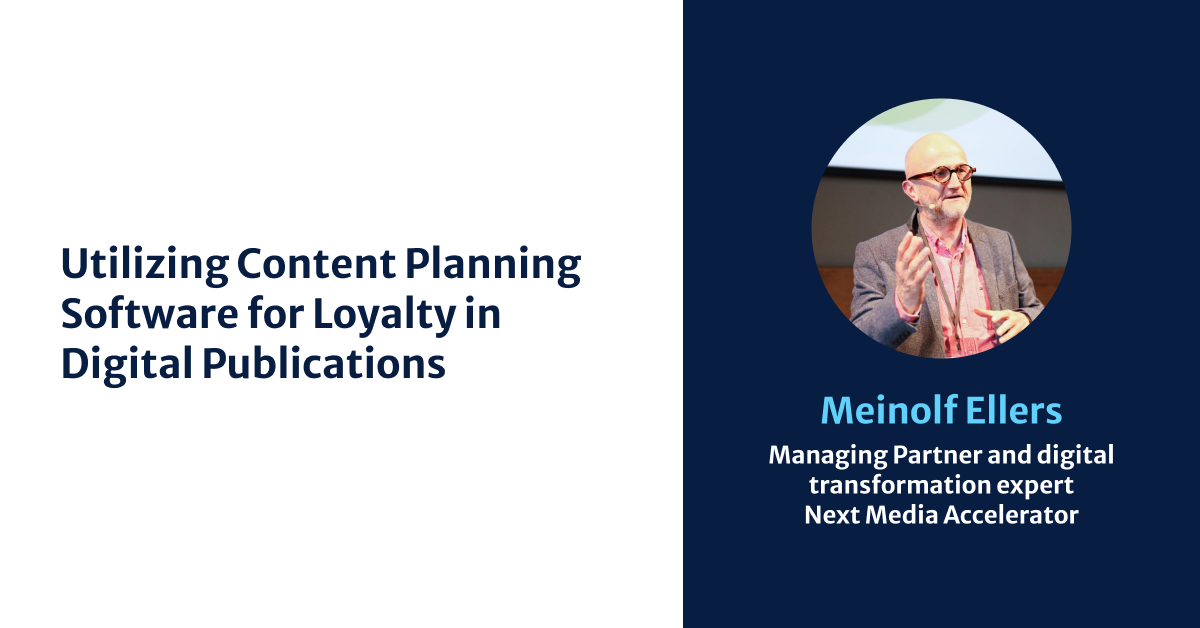How Süddeutsche Zeitung Uses Data to Turn Readers into Subscribers
Analyst and Audience Development Editor at Süddeutsche Zeitung Digitale, Christopher Pramstaller brought a data-driven approach to converting occasional readers to subscribers. But as with any data analysis, the problem is tuning the editorial workflow.

"Engaged readers are important for all of us, we need loyal subscribers, and that means knowing how often readers visit a website. Yes, but it's not just about frequency, it's about other metrics too. How engaged are they? What user groups do you have?"
"Publishing is becoming more complex, and the rough metrics we have are from too many sources to evaluate how the target group behaves on a website. Single metrics aren't sufficient anymore, so to get closer to the aspect of loyalty, we had to find a more suitable concept."
What does loyalty mean in a newsroom?
Rather than see loyalty as a character trait, Pramstaller looked at what it really meant in the context of the newsroom.
"Loyalty is linked to an understanding of the whole brand; so, if we have loyal readers at Zeitung, what does that mean if I'm in an editorial team – should I write a report on 'environment' or what? To determine quarterly goals and half year goals, we need a mixture of metrics that capture loyalty on an individual level. At Zeitung, we have improved our editorial workflow by developing a taxonomy to provide editors with actionable insights."
Behaviorial metrics are important to identify loyalty in readers
 There is a dazzling array of metrics out there, but as Pramstaller points out, that doesn't necessarily help paint a picture of what drives loyalty.
There is a dazzling array of metrics out there, but as Pramstaller points out, that doesn't necessarily help paint a picture of what drives loyalty.
"There are plenty of browser metrics from ads and promotions, but this is not sufficient, so we realized we needed to measure more complex behaviors. Behavioral metrics are important, so you need to know how long people read and how many pages per session. The problem is that you end up combining desktop and mobile users, and you come to a point with a lot of noise and no insights."
Analyzing and understanding your raw data
That sense of drowning in data will be a familiar issue to anyone looking to understand reader loyalty. But where many of us muddle through with a mix of incomplete data insights and gut feeling, Pramstaller opted for a more scientific approach.
"Working with the data science team at Content Insights, we analyzed the reader data from eight weeks across seven different news sites. That came to 20 terabytes of raw data. The objective was to find out if, on an individual level, behavior could be predicted."
"Put another way; are there habits in user groups that can be isolated? Could these different user groups be filtered out? How high is the share of users per subject, whether that is royals or sport? Can we then say that there are significant enough loyalty levels for this that it makes sense to focus on it to eventually convert that interest to a subscription?”
The way they did that was to examine a complex set of metrics. Also, by identifying reading time, depth, and pages per session, they got an overview of user behavior, return visits, and engagement.
"A loyal reader is a habitually, highly engaged reader and is more likely to become a subscriber. We wanted to know which areas to work on, and in which areas we have problems when it comes to loyalty."
Armed with the resulting metrics, what remained was how the staff would adjust the editorial workflow to convert that data into something actionable.
"Editorial insights only actionable when two things are in place
- Data must link to meaningful sets of content and
- It has to be looked at regularly and purposefully."
"We found that local aspects, craftsmanship, and sustainability all worked. But that was only the start; there then followed the issue of setting KPIs (key performance indicators)."
New ways of working in publishing
What Christopher Pramstaller found was very much in tune with the other presenters at the Editorial Days 2019; the old ways of working with 'fire and forget' article publications are no longer sufficient, and publishing is now a process of constant monitoring and modification.
 "Historically, we come from a background where we focus on articles, but if you want a real debate, that doesn't work."
"Historically, we come from a background where we focus on articles, but if you want a real debate, that doesn't work."
Pramstaller's team concluded that the whole editorial workflow model itself had to evolve, and the point of publication doesn't mark the end of the process but rather the beginning of the review stage. "Introducing regular reviews to editorial workflows is necessary when working on nurturing a loyal audience."
How that is best presented to a traditional newsroom culture is a secret saved for another day, but Pramstaller's parting words evoked patience and thoroughness. "Loyalty takes time. Working on it takes persistence."

